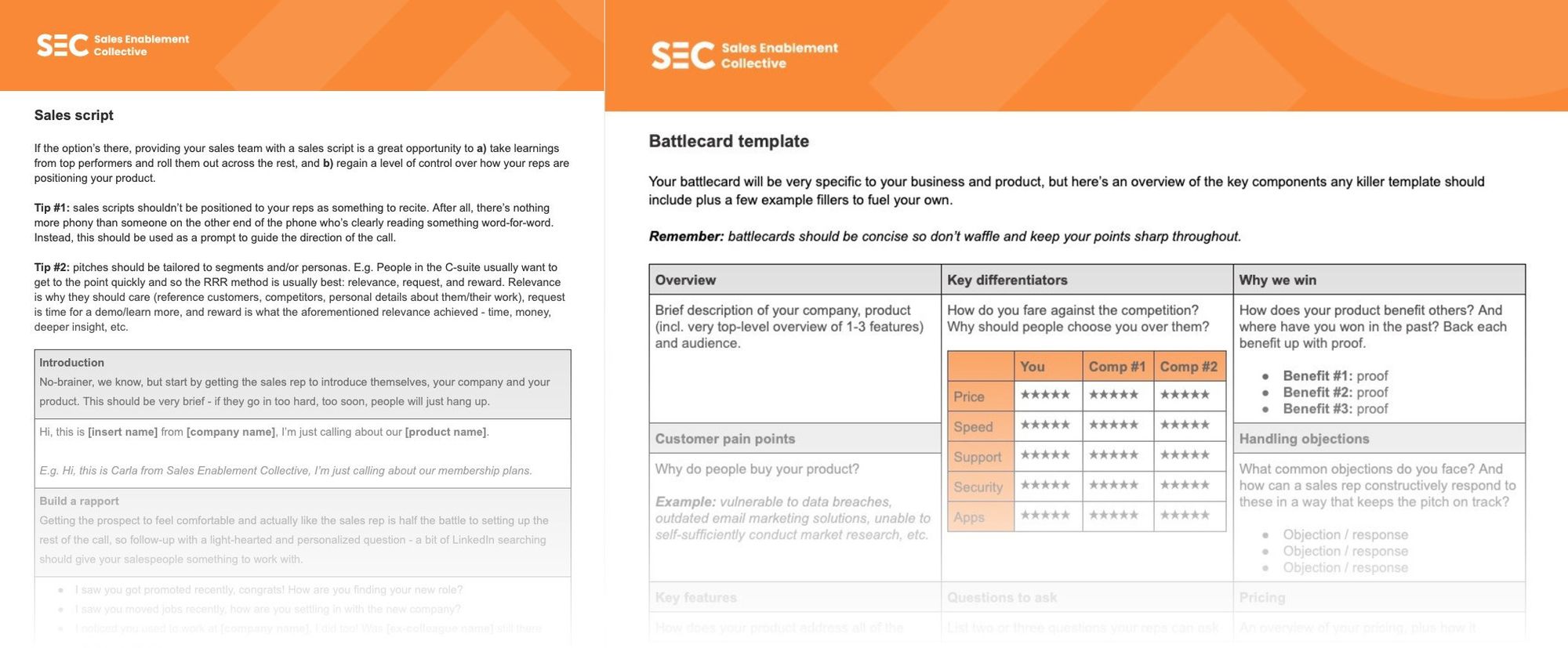What is sales enablement?
Sales enablement is what SEC is all about.
Sales enablement's recognition as a unique function is relatively new, and it continues to grow year-on-year. While no longer niche, the words 'sales enablement' can still draw some confused looks from people who don't quite know what it means.

While sales onboarding and training has always existed, sales enablement grew beyond those constraints and became its own, now essential, function within sales organizations.
In short, sales enablement involves providing your sales representatvies with the resources, coaching, and support needed to maximize their effectiveness. This is a continuous process that doesn't just stop after onboarding.
Sales enablement's ultimate goal? To create a repeatable, scalable system where reps are elevated and the organization's goals are met in a more efficient way.
But don't just let me tell you that, listen to expert sales enablement professional Gail Behun say it 👇.

Have a better idea now?
If you're still unsure, keep reading these wise words from more sales enablement experts such as Hang Black, Kunal Pandya, and Bill Petersen.
What is sales enablement content?
If you've spent more than ten minutes around a sales enablement professional, you've probably heard the word content mentioned.
But if you're new to sales enablement, or have recently started to work alongside sales enablement in your organization, you might be wondering what sales enablement content even is.

In short, content (in a sales enablement context) is material provided to reps as they naviagte through the sales process.
This material can take many forms, including battlecards, templates, and scripts. The material's overall aim is to give reps a reliable source of facts, stats, and operating procedure so that they have full confidence when working towards a sale.

SEC's membership plans includes templates, frameworks, and checklists like these, exclusive to members. Become an SEC member to gain instant access.
Sales enablement may collaborate with other departments when creating the content, such as Marketing and Product Marketing, and the ability to create useful, engaging content is often what separates a good sales enabler from a great one.
Content can also include material which is designed to be customer-facing, rather than internal (from the sales enablement team to the sales reps).
The purpose of this content is the same; to support the rep and increase their chances of making a sale. Customer-facing content just does this in a slightly different way.
This type of content often takes the form of a PDF or whitepaper containing facts, features, case studies, and so on which the rep can give to a prospective client during their conversations to try and push a sale over the line.

Content is great, both when it's internally and externally-facing. However, it can't be your only strategy to support reps. It's one (important) part of your overarching sales enablement strategy. It's one way in which you, as a sales enablement professional, support your reps and elevate their performance.
Overreliance on content can slow reps down, forcing them to trawl through PDF after PDF to find relevant material. Worse still, your prospects may find themselves inundated by content when they want to have a conversation about your product/service.
Sales enablement metrics: how do you measure success?
In sales, metrics are so often the measure of success.
When it comes to sales enablement and measuring its success, it can be a little trickier. How do you specifically prove that a rep's improvement is down to sales enablement's day-in, day-out efforts and not down to a number of other factors?

As we mentioned before, sales enablement shines when creating repeatable, scalable processes. Metrics like time to first deal and size of first deal are often used by sales enablement professionals because having reps across the board consistently make bigger deals more quickly is a strong demonstration of sales enablement's impact.

To assist the sales enablement professionals across the industry who are constantly looking for new ways to measure their department's impact, we released the Measuring Sales Enablement report.
In it, sales enablers share how they're demonstrating ROI to the C-Suite.
Sales enablement is constantly evolving and looking to improve, so don't be surprised to see more detailed metrics appear over time as sales enablers find new ways to analyze their impact.
What are sales enablement tools?
As the sales enablement function rose to prominence, as did software and tools to assist sales enablement professionals in their role.
These come in various forms with various functions. From learning management systems (LMS), to tools that link to an organization's existing customer relationship management systems (CRM), and more. World class sales enablement tools do exist and should be utilized.
While features and functions may differ, they're all aiming for the same thing: to make sales enablers (and their teams) work more efficiently and effectively. The challenge is being able to sift through the countless options and choosing the right ones for your organization.

Finding the right tools isn't the only hard part about building a sales enablement tech stack. The evergreen challenge is budget-constraints, and a bloated tech stack can cause unforeseen issues.
Sales enablement professionals need to be on top of their game to build the perfect tech stack. If they do manage it, they'll be rewarded with efficient, innovative ways to support their teams.
Want more resources like this at your fingertips? Become an SEC member today and gain instant access to 200+ hours of OnDemand video content, member-only templates, articles, and more.




